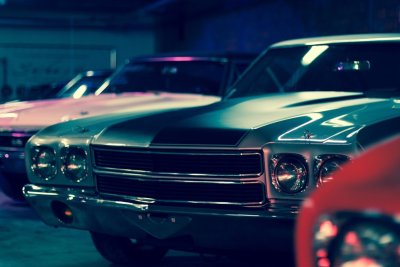When you think of a muscle car, what comes to mind? Perhaps it's the iconic roar of a V8 engine, the sleek and powerful design, or the feeling of pure speed and adrenaline. Whatever it may be, there's no denying that muscle cars have left an indelible mark on automotive history. But where did these powerful and beloved vehicles come from? Let's take a journey through the history of the muscle car.
The roots of the muscle car can be traced back to the late 1940s and early 1950s, when American car manufacturers began experimenting with larger engines and lightweight bodies. This was a time when speed and performance were becoming increasingly important to car buyers. In 1949, Oldsmobile introduced the Rocket 88, which had a V8 engine and was considered one of the first muscle cars of its time. Other manufacturers soon followed suit, with Chrysler releasing the Hemi-powered Chrysler 300 in 1955 and Pontiac introducing the Bonneville in 1958.
However, it wasn't until the 1960s that the term 'muscle car' was officially coined. The credit for this term goes to John Z. DeLorean, who was the general manager of Pontiac at the time. In an effort to appeal to the younger generation, DeLorean coined the term 'muscle car' to describe the Pontiac GTO, which was released in 1964. The GTO was a mid-sized car with a powerful V8 engine and was marketed as a performance-oriented vehicle. It quickly became a hit and paved the way for other manufacturers to enter the muscle car market.
The 1960s and 1970s are considered the golden age of muscle cars, with a wide range of models being produced by American car manufacturers. Some of the most iconic and memorable muscle cars from this era include the Chevrolet Camaro, Ford Mustang, Dodge Charger, and Plymouth Road Runner. These cars were designed for one thing: speed. They had large, powerful engines (often with multiple carburetors), lightweight bodies, and a focus on straight-line acceleration.
However, the popularity of muscle cars began to decline in the 1970s due to stricter emissions and safety regulations, as well as rising gas prices. This led to the end of the golden age of muscle cars, with many models being discontinued or redesigned to meet these new standards. The 1980s and 1990s saw a shift towards smaller, more fuel-efficient cars, and muscle cars were seen as relics of the past.
But the love for muscle cars never truly died. In the 2000s, there was a resurgence of interest in these powerful vehicles. Manufacturers began reintroducing classic models, such as the Ford Mustang and Dodge Challenger, with modern updates and technology. This brought a new generation of muscle car enthusiasts, drawn to the nostalgia and raw power of these vehicles.
Today, muscle cars continue to hold a special place in the hearts of car enthusiasts around the world. They represent a time when performance and speed were at the forefront of the automotive industry, and their iconic designs and powerful engines continue to captivate us. From their humble beginnings in the 1950s to their enduring legacy in the 21st century, the history of the muscle car is a testament to the enduring love for speed, power, and American ingenuity.
Note: This article was initially published on detroitdreamer426.com, which is a project of mine.


Recommended Comments
There are no comments to display.